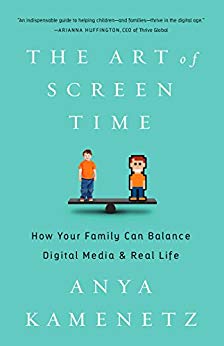Why You Shouldn't Limit Screen Time
As innovative educators know, not all screen time is created equal and one-size-does not fit all when it comes to learning and development.

Read fear-mongering pieces like the click bate trio of stories that appeared in the New York Times this fall about the "Dark Consensus Around Screens," and you'd think you can't be a good parent or educator unless you limit screen time. While such pieces prey on insecurities, make good headlines, and draw in concerned parents and teachers, at best such stories lack nuance. At worst they lack research.
As innovative educators know, not all screen time is created equal and one-size-does not fit all when it comes to learning and development. Just like we wouldn't limit a child's book time, writing time, or computing time, we also shouldn't blindly limit the screen time of a young person. It's not the screen that matters. It is what's happening behind the screen that does.
Regardless of what's happening behind the screen though, valuable or not, despite what you may have heard, it is not best for young people to have adults limit their screen time.
Here's why.
Our primary role as parents and educators is to help develop independent learners and thinkers. Asking youth to follow someone else's orders rather than having meaningful conversations about making choices that are best for their personal, emotional, social, and intellectual well-being does them a disservice.
Rather than limiting screen time, talk to young people about choices they are making with their use of time. Also, be ready to discuss your own digital habits and areas that are working well as well as areas that may need to be reconsidered.
In her book, “The Art of Screen Time,” Anya Kamenetz, NPR’s lead digital education reporter, suggests that adults can better support young people if they actually focus on concerns they may have, rather than the screens. Top concerns we have for youth include:
If we shift the focus of our conversations from time on screens to discussing what is best for our bodies and minds then we can help young people make informed decisions for themselves.
Young people are already armed with much of this knowledge. For example, they know the power of learning with YouTube and various apps. They may have used technology to assist them in learning or accessing information using tools like voice to text, text to voice, or modifying size and colors of what is on screens. They also may be able to talk about how to limit distractions or what to do when someone acts inappropriately online.
Adults can help young people deepen understanding by moving beyond the headlines and toward taking a look at some of the organizations, publications, and research (i.e. Center for Humane Technology, Common Sense Media, The Art of Screen Time) that address the positive and negative outcomes that result from screen use.
Ultimately, what is best for young people, is not for adults to limit screen time for them. Instead help them develop a deeper understanding that enables them to make informed decisions for themselves.
Lisa Nielsen (@InnovativeEdu) has worked as a public-school educator and administrator since 1997. She is a prolific writer best known for her award-winning blog, The Innovative Educator. Nielsen is the author of several booksand her writing has been featured in media outlets such as The New York Times,The Wall Street Journal, Tech&Learning, and T.H.E. Journal.
Tools and ideas to transform education. Sign up below.
Lisa Nielsen (@InnovativeEdu) has worked as a public-school educator and administrator since 1997. She is a prolific writer best known for her award-winning blog, The Innovative Educator. Nielsen is the author of several books and her writing has been featured in media outlets such as The New York Times, The Wall Street Journal, and Tech & Learning.
Disclaimer: The information shared here is strictly that of the author and does not reflect the opinions or endorsement of her employer.
